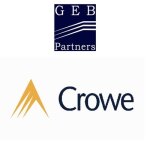On January 10 2025, the Italian Revenue Agency approved the guidelines for the establishment of an effective system for detecting, measuring, managing, and controlling tax risk (a so-called tax control framework) for companies intending to join the cooperative compliance regime, which was introduced in 2015 to promote enhanced cooperation between the tax administration and taxpayers.
The regime is reserved for resident and non-resident entities (with a permanent establishment in Italy) that achieve a turnover or revenue of no less than:
€750 million for 2024 and 2025;
€500 million for 2026 and 2027; and
€100 million starting from 2028.
Benefits for companies under Italy’s cooperative compliance regime
The cooperative compliance regime provides several incentives for companies that choose to adhere to the regime, including:
An expedited advance ruling procedure;
A full exemption from administrative penalties for tax risks that are promptly and comprehensively disclosed before tax returns are filed or before the relevant tax deadlines;
A 50% reduction of penalties for conduct related to non-significant tax risks included in the company’s risk map;
An exemption from providing guarantees for refunds of direct and indirect taxes throughout the regime;
The possibility to engage in discussions regarding past tax periods prior to admission into the regime, within 120 days from the admission decision;
An exemption from criminal liability; and
A reduction of the statute of limitations for tax assessments.
The Revenue Agency’s guidelines, published on January 10 2025, provide a detailed framework for building, updating, and certifying an effective tax control framework. The highlights include the following:
Tax risk and control mapping – a structured methodology is introduced to identify and map relevant tax risks, offering guidelines for taxpayers in the industrial sector.
Certification and attestation – taxpayers intending to join the regime must obtain mandatory certification of their tax control system, which must comply with accounting principles and attest to the operational effectiveness of the tax control framework. The operational procedures for this certification are defined by the Ministry of Economy and Finance.
Transition to a standardised model – the guidelines aim to shift from an ‘open’ tax management model to a ‘certified’ and more standardised approach, ensuring greater uniformity and reliability.
Adoption and certification requirements for a tax control framework
To facilitate the transition from an open model to a more standardised and certified model, the guidelines specify the following minimum requirements for the adoption of a tax control framework and for its certification:
The adoption of a tax strategy document, defined as “a written document signed by the company’s top executives, containing a long-term action plan that, both strategically and operationally, defines the company’s objectives in managing tax matters”.
The integration of appropriate controls within the tax control framework for financial-accounting reporting, ensuring the correct application of the adopted accounting principles.
The design of a tax compliance governance model based on the ‘three lines of control’ approach.
The establishment of a second-level monitoring function (tax risk management) responsible for overseeing the implementation of tax controls. This function must possess specific tax expertise and be organisationally and functionally segregated from the first-level tax control functions.
The adoption of a “tax risk interpretation management policy”, ensuring the implementation of effective measures to identify tax risks of an interpretative nature. These risks must be communicated to the Revenue Agency during the continuous and preventative dialogue.
In the tax risk assessment process, the following areas are identified where tax risk may arise and must therefore be detected and managed:
Compliance tax risks, which refer to the risks of failing to correctly fulfil tax obligations as prescribed by law. These are compliance-related operational risks that affect both business processes (such as the risk of not properly executing all necessary operational steps to ensure the accuracy, completeness, and validity of tax-relevant data) and specific tax compliance phases (from data collection to the preparation of tax returns, tax payments, and communications with the tax authority). Typically, the tax function directly ensures the mitigation of these risks in the compliance phase, while risks affecting business processes are generally mitigated by controls implemented by operational and business functions.
Interpretative tax risks, which relate to the application of tax regulations and arise from interpretative uncertainties regarding abstract legal provisions and from the uncertain qualification of specific cases in relation to legal requirements. These risks may arise, for example, from the adoption of new tax provisions originating from various sources within the tax system (legislation, case law, administrative practice, international soft law, etc.).
A specific case concerns the risk of tax fraud, which refers to the possibility of being involved in fraudulent tax schemes due to fraudulent actions carried out by third parties. These third parties include individuals, companies, or entities of any kind, distinct from the business itself, even if they are connected to it through employment relationships, shareholding, collaboration, commercial partnerships, or other forms of association.
Monitoring encompasses all activities aimed at verifying that the internal control system is properly designed and operational. Based on the results of this activity – evaluated over a sufficiently long period to ensure the reliability of the finding – management expresses its assessment of the effectiveness of the control system as of the end of the reporting period.
As previously mentioned, the company’s tax control framework must be certified by independent lawyers and accountants with qualified experience, who are registered in the appropriate lists maintained by the National Bar Association and the National Council of Chartered Accountants and Accounting Experts. The certifier must assess whether the taxpayer’s tax risk control system, for those intending to join the cooperative compliance regime or the optional regime, provides reasonable assurance to the relevant stakeholders, including the tax authorities, regarding a conscious and reliable management of the tax variable.













